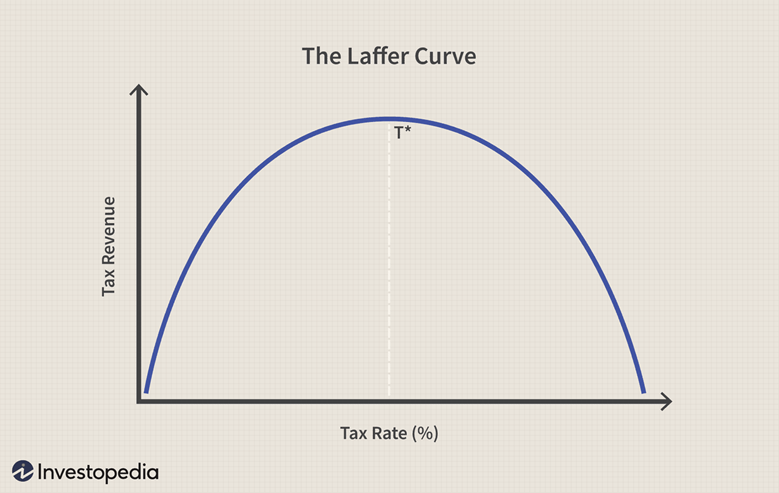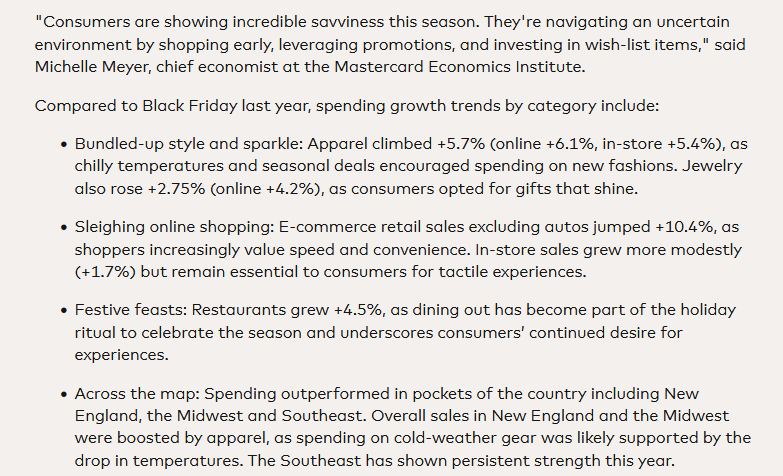Donald Trump recently addressed top CEOs with a proposal that he sells as helping to reduce income taxes. Trump came out in favor of possibly abolishing income taxation and replacing it with tariffs to finance the federal government. It is likely that the trade-off is simply rhetoric to sell everyone on his protectionist policy, but it is still worth picking apart a critical flaw in the idea regardless.
Let’s assume there will be no cuts to spending, but also no expansion. Some publications have tried to crunch the numbers and posited it may take an 85 percent tariff to make up for the loss of federal income tax revenue. Unless this is done, there is likely to be deficit spending, borrowing, and eventually inflation from debt monetization.
But even this reality misses the problem: that problem is called the conceptual Laffer Curve. The Laffer Curve is a diagram that is supposed to demonstrate the optimal rate of taxation, the taxation rate at which revenue is maximized before further taxation would cause it to decline again.

Tariff rates as high as 85 percent could very well dissuade enough trade that revenue begins to decline. That is, however, a total guess. Economists posit the ability to calculate elasticity, to justify the correct goods to tax and use tools like the Laffer curve to determine the correct rate of taxation. These tools, however, largely lack practical use.
Elasticity in particular is a largely useless tool. We know that people’s preferences change over time, so when we look back at data of prices and quantities sold, we have no idea whether these things are truly the result of shifts of the demand curve or along it. The person’s preferences could have wildly changed over this time with no real measure for them. There is no way to properly create a demand curve, which is purely a conceptual tool as Mises identifies in Human Action.
Much the same applies to the Laffer Curve. We cannot know whether people’s preferences have changed over any given period of time that would make them more willing to tolerate higher taxation while still purchasing goods. Ceteris paribus a higher tax rate will lead to less consumption of the taxed good, but ceteris is not paribus. The people could increase their demand for goods independent of taxation, which would cause them to decrease consumption less, but the opposite could also be true. The only proper measure we can construct is how much is bought in the real world through demonstrated preference.
There is no real way for us to know in the future whether higher taxation will create more or less revenue. We can make assumptions holding all other things equal, but that doesn’t happen in the real world. There is no real method to determine the optimal amount of taxation to maximize revenue–just conceptual tools that tell us there is some amount out there. We have no way of knowing what that is, and begs the question of the practicality of Trump’s policy proposal.
One need only look at the worsened conditions caused by the Smoot-Hawley Tariff, that prevented proper liquidation and readjustment of malinvestments, while hiking rates incredibly high. Volume of trade collapsed. Revenue from taxation declined. But we have no means of knowing what quantitative effects would directly occur from higher or lower rates in this case but it shows what horrid effects tariffs can have on an already struggling economy.
As I have reiterated elsewhere before, protectionism motives of dissuading trade come in conflict with the rhetoric of “maximizing” tax revenue for the government. It is more likely Trump is using this rhetoric to dress up protectionist policies, but even assuming the best intentions it is hardly convincing. Tariffs are not a practical revenue stream, and there is no way to determine what is the proper amount even if they were. Trump should focus on cutting spending so he can cut taxes and drop the poor protectionist rhetoric. Economic theory has proved time and time again that it does not work.
Full story here Are you the author? Previous post See more for Next postTags: Featured,newsletter





















